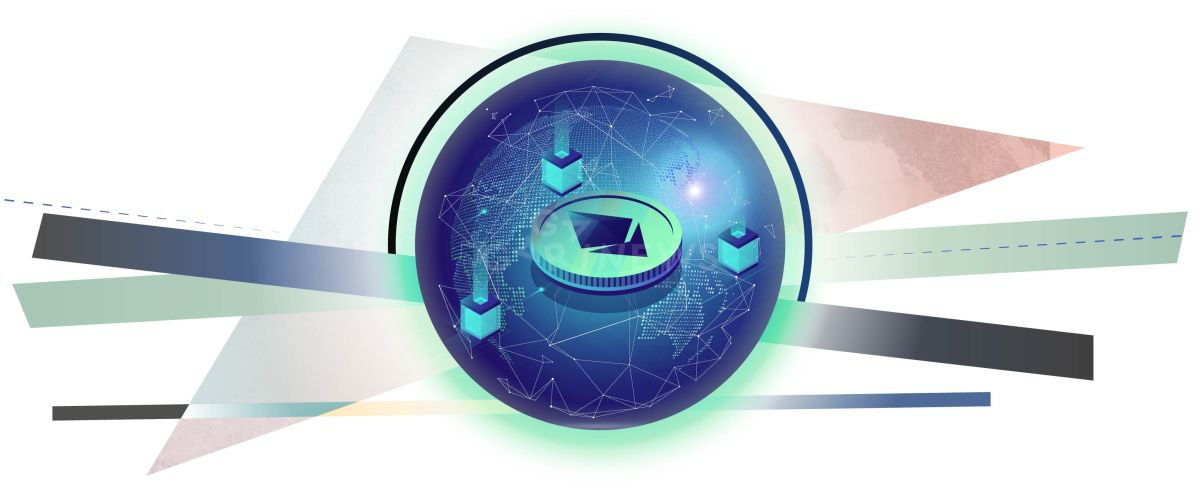What is ERC-20, and how has it changed the crypto market?

A detailed guide on ERC-20 token standard: significance, benefits, characteristics, and how it influenced the cryptocurrency industry. What is the ERC20 address, and where is it located? What is the difference between ERC20 and TRC20?
On this page
ERC-20 token – what is it?
ERC-20 is one of the standards that allows the creation of tokens on the Ethereum blockchain. The abbreviation ERC stands for Ethereum Request for Comments. This is the name of the protocol that accepts suggestions to improve the blockchain. The number 20 stands for the serial number of the recommendation.
Before the invention of ERC-20, the prevailing principle was to have a separate blockchain for each cryptocurrency. But things changed dramatically when Ethereum executives launched a standard in 2015 allowing digital currencies to be issued within their blockchain by using smart contracts.
This brought some ease to the process of creating new cryptocurrencies. Many new projects have emerged in the industry, and blockchains have formed and begun to develop their norms.
Consequently, an ERC-20 token is a cryptocurrency created on the Ethereum blockchain according to some established rules. For example, there are such popular ERC20 tokens as USDT (Tether), SAND (The Sandbox), UNI (Uniswap), AXS (Axie Infinity), MKR (Maker), APE (ApeCoin), LINK (Chainlink), COMP (Compound).
The Ethereum protocol is widely used in the DeFi sector and among the native tokens of various cryptocurrency projects. The most used ERC20 wallet is Metamask.
Advantages of ERC-20
Features of the ERC-20 standard
Cryptocurrencies developed under the ERC20 protocol must comply with specific rules. Currently, there are 9 regulations: 6 mandatory and 3 secondary ones.
TotalSupply. It indicates a limited emission of tokens. After reaching the set maximum number, the generation of new cryptocurrencies stops.
Approve. It eliminates the appearance of counterfeit tokens and checks whether the smart contract can distribute tokens based on the total amount of cryptocurrencies.
BalanceOf. It returns the emission stored on the address, which enables a balance check. It determines the address assigned to the founding company's address.
TransferFrom. Is responsible for automating the transaction.
Transfer. It allows sending tokens to other users.
Allowance. Provides a check on the proper amount of funds to perform a transaction.
Additional parameters include the name of the cryptocurrency, its ticker, and the number of digits after the decimal point. Due to these simple standards, a unified algorithm emerges and allows interaction with different ERC-20 tokens easily.
What is an ERC20 address?
Basically, an ERC20 address is a code for your wallet that supports the Ethereum network. All addresses of this blockchain are compatible due to the same standard. They start with “0x”, include numbers, uppercase, and lowercase letters, and have a length of 42 characters.
Where can the ERC20 address be found? You can find it in Metamask and copy it easily right after logging into the wallet: it is in the block with your account name, located above the balance.
Also, tokens developed on the Ethereum blockchain have their ERC20 address. In this case, it is called a contract. You will find it on the analytics platform Etherscan. There you will also see the latest transactions and other asset statistics.
What is the difference between ERC20 and TRC20?
TRC20 is the standard for issuing tokens on the TRON blockchain network. The algorithms for creating cryptocurrencies using this protocol are almost identical to Ethereum. In addition, both blockchains use the same programming language for smart contracts – Solidity. This provides for full compatibility.
TRC20 tokens have lower transfer commissions and faster transactions. This is because the TRON network operates on the Delegated Proof of Stake (DPoS) consensus method, which is better scaled. It’s also due to the congestion of Ethereum. Thus, many people in the crypto community prefer TRON for its higher throughput.
ERC-20 loses in terms of quality to its “brothers” as well since, over time, several weaknesses and issues were discovered in the pioneer. When this happened, one user developed the ERC223 standard, which fixed the bugs. But that version wasn’t all that great either. That is why ERC-827 appeared. It is the latest version of the Ethereum protocol and a competitor to ERC-20.
Although it is pretty challenging to implement new standards, as it is a complicated process, we can see that changes for the better will soon appear.
The content on The Coinomist is for informational purposes only and should not be interpreted as financial advice. While we strive to provide accurate and up-to-date information, we do not guarantee the accuracy, completeness, or reliability of any content. Neither we accept liability for any errors or omissions in the information provided or for any financial losses incurred as a result of relying on this information. Actions based on this content are at your own risk. Always do your own research and consult a professional. See our Terms, Privacy Policy, and Disclaimers for more details.


























